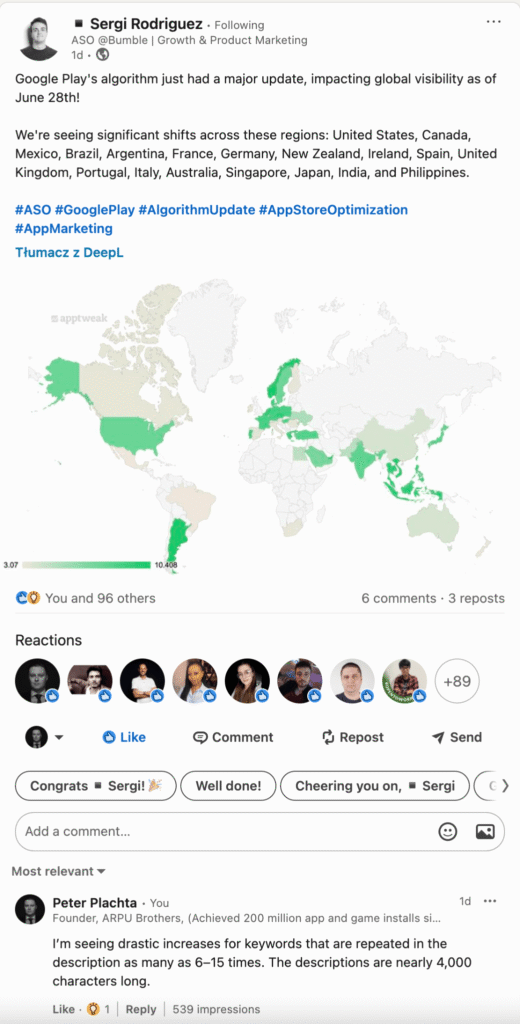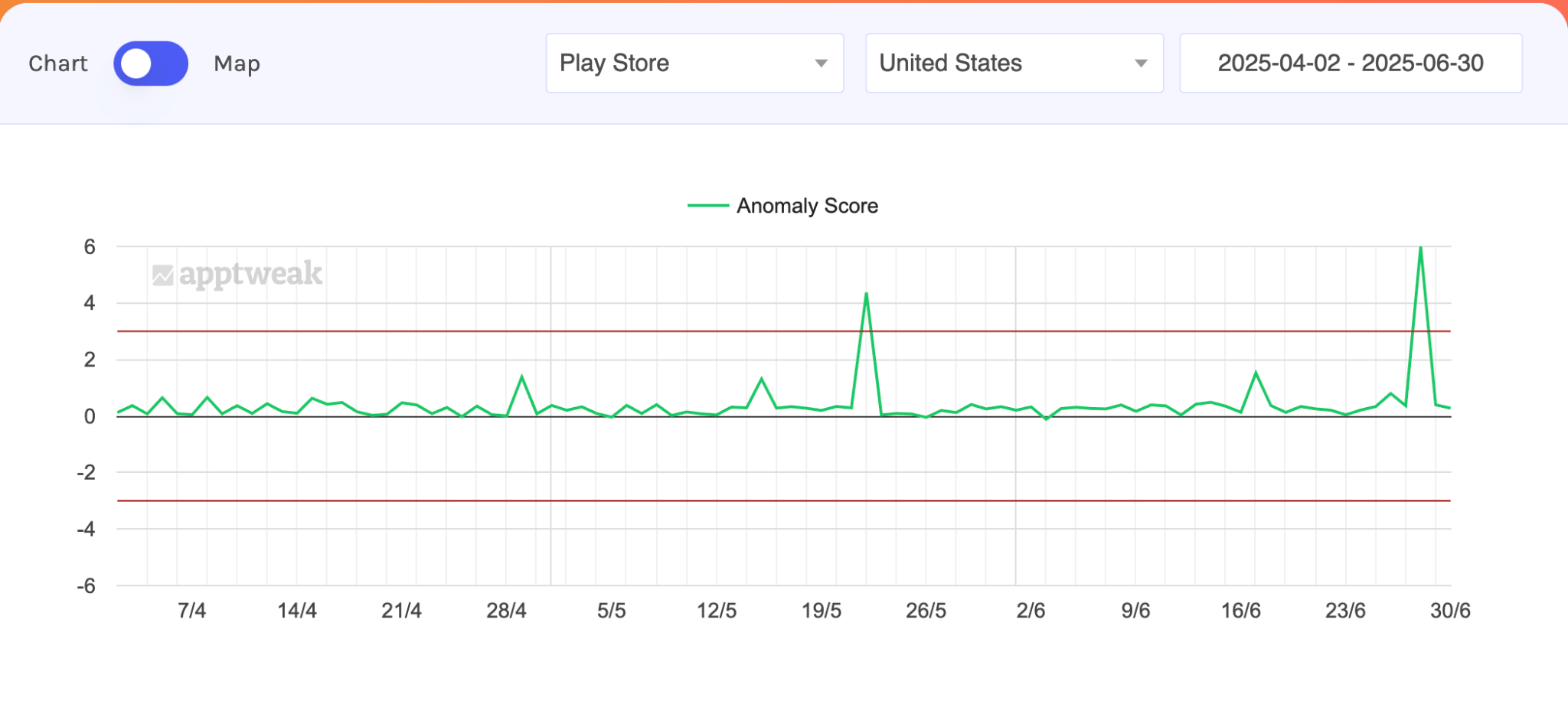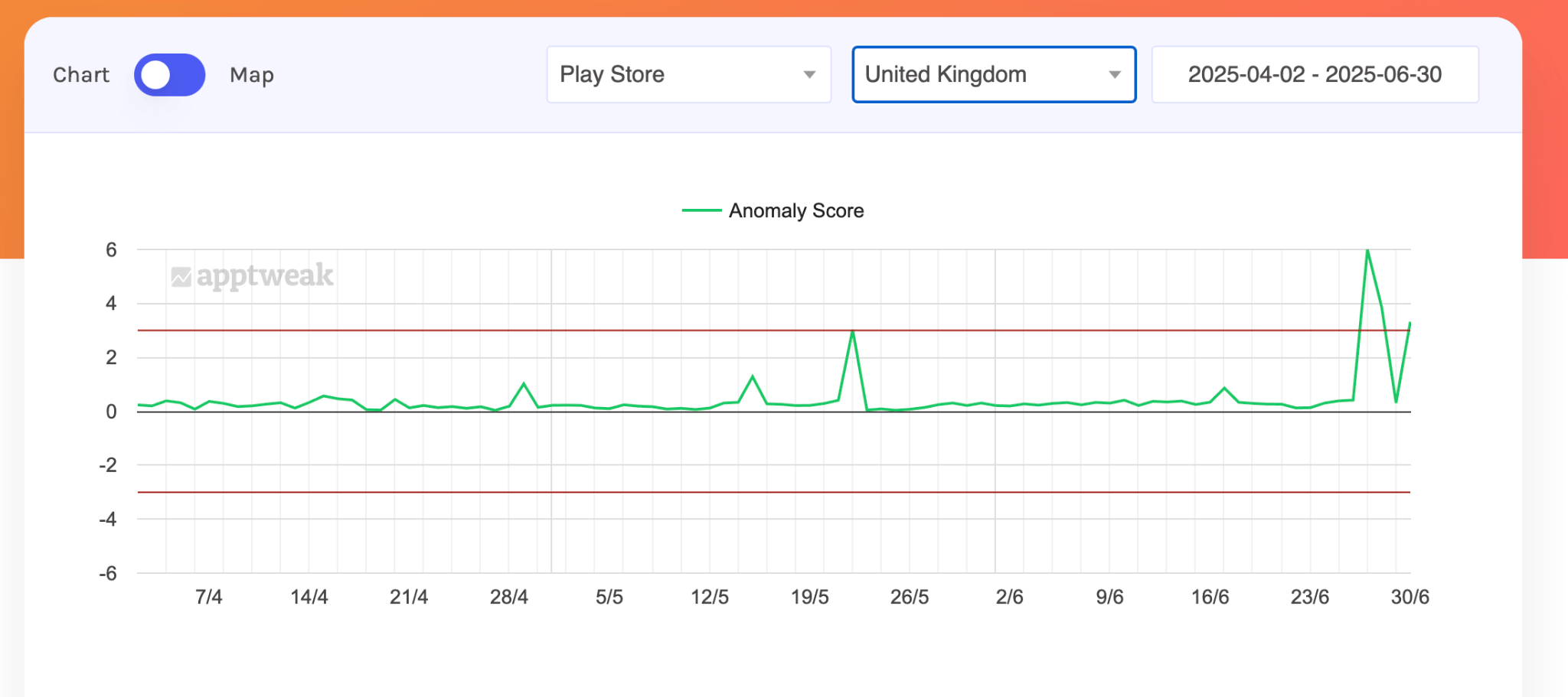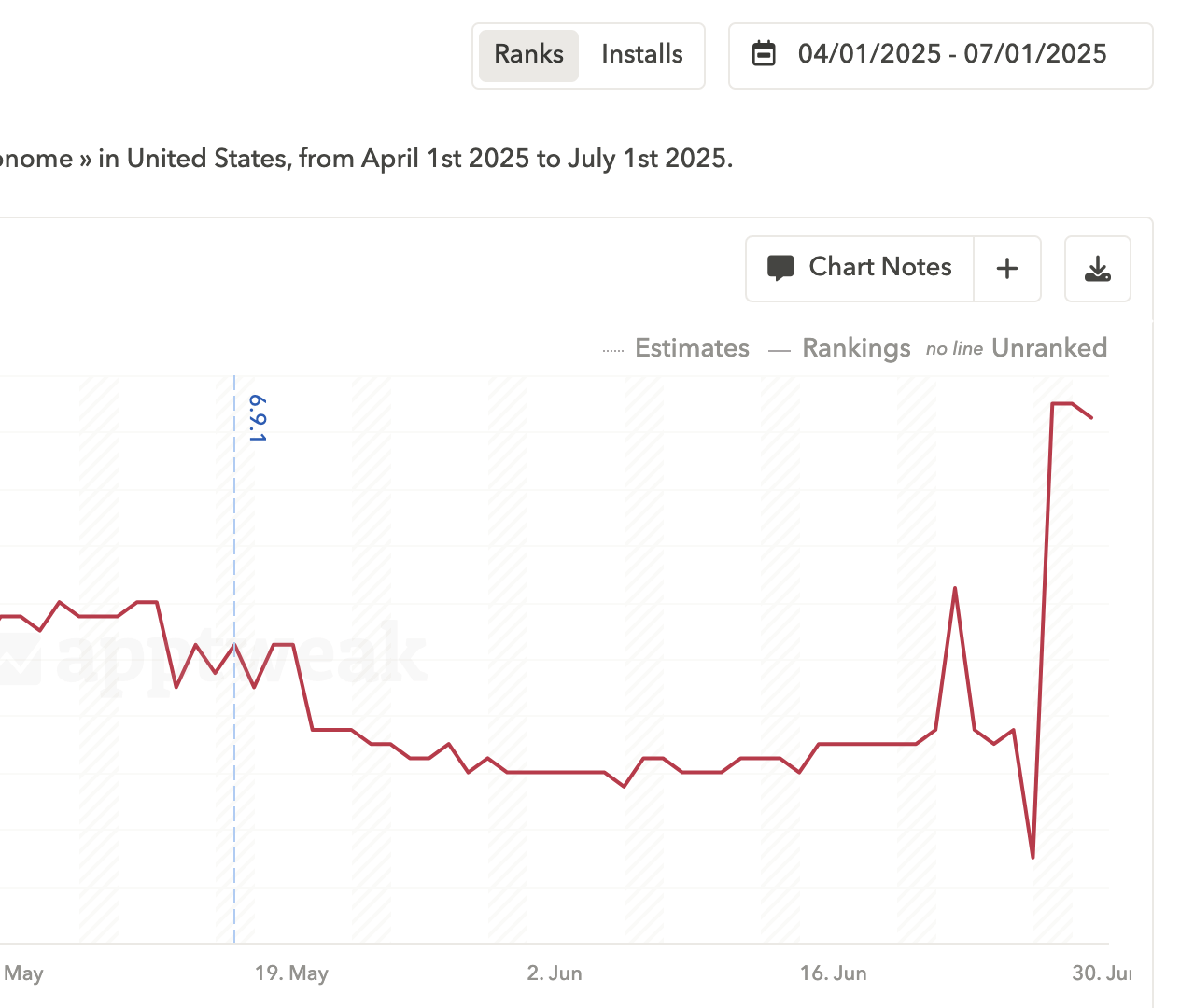ASO Google Play Algorithm Changes – Keyword Movements June 2025
The Google Play platform experienced major changes in app keyword rankings on June 28, 2025 which indicates an update to the ranking algorithm. The AppTweak App Store Algorithm Change Detector and AppTweak recorded unusual ranking fluctuations on June 28, 2025. The extensive nature of these changes suggests Google made major alterations to its search result evaluation process but the company has not officially disclosed the specific modifications.
Sergi Rodriguez from Bumble who serves as an App Store Optimization expert was one of the first to alert the community about these major changes through LinkedIn while confirming their worldwide reach and their effect on app visibility in essential markets.

Detected Anomalies: Data from the AppTweak Algorithm Change Detector
The App Store Algorithm Change Detector which serves as a leading tool for App Store Optimization professionals to track algorithm modifications in both App Store and Google Play detected unusually high anomalies in Google Play Store keyword rankings on June 28, 2025. The Anomaly Score reached its highest value of 6 during the analyzed period from April 2 to June 30, 2025 according to the data analysis.


To understand the significance of this event, it’s important to explain how the AppTweak anomaly detection system works. This tool uses advanced algorithms to monitor unusual movements in keyword rankings, where two red lines on the chart represent the thresholds for abnormal behavior in the App Store or Google Play Store. When the anomaly score exceeds +3, it means that the number of keyword ranking shifts is exceptionally high and likely indicates a potential algorithm change.
In the case of the June 28 event, the score not only surpassed the +3 threshold but reached a value of 6, which is twice the standard alert threshold. By comparison, during most of the analyzed period, the score fluctuated around 0–1, with only occasional spikes to levels 2–3. Such a dramatic jump to 6 clearly indicates large-scale shifts in app rankings, which could only have been triggered by a fundamental change to the Google Play algorithm.
It’s worth noting that similar anomalies had been observed earlier in the year, but on a much smaller scale. For example, on May 22, 2025, there was a spike to around 4, but this was a short-lived incident and less widespread. The anomaly detected on June 28 stands out due to its high intensity.
On June 28, the App Store Algorithm Change Detector recorded major anomalies in countries such as:
- United Arab Emirates, Israel, Saudi Arabia, Turkey, Argentina, Brazil, Austria, Belgium, Switzerland, Czech Republic, Germany, Denmark, Spain, Finland, France, United Kingdom, Greece, Hungary, Ireland, Italy, Netherlands, Norway, Poland, Portugal, Romania, Sweden, Ukraine, Australia, New Zealand, China, Hong Kong, Indonesia, India, Japan, Korea, Malaysia, Philippines, Pakistan, Russia, Singapore, Thailand, Taiwan, Vietnam, Canada, United States, Egypt, and South Africa.
This geographic diversity among the affected markets suggests that the change was not tested locally or rolled out gradually, but rather implemented globally at the same time.
When analyzing the June 28 changes on Google Play, it’s also important to highlight parallel events within Apple’s App Store ecosystem earlier that same month. Between June 5 and 9, 2025, AppTweak recorded similar anomalies in the App Store, which I covered in a previous post.
According to an analysis by Ariel Michaeli, CEO of AppFigures, Apple introduced one of the most significant App Store algorithm changes in years in June 2025—the system began indexing and utilizing text from app screenshots as an additional ranking factor. I analyzed several apps myself and couldn’t definitively confirm this change.
Such a synchronization of changes across both major mobile app distribution platforms within a single month is unprecedented and may indicate a broader industry trend related to the evolving ways users discover apps.
What impact did the changes have on keyword rankings?
I analyzed several mobile apps for which I have managed App Store Optimization over the past few years, and I can confirm that no changes had been made to their metadata (title, short description, long description). I’m not a fan of making frequent metadata changes in Google Play Store, as such updates can cause significant drops in rankings and it can take months to recover.
I noticed that keywords with higher-than-average search volumes—such as the keyword “37”—entered the TOP 10 in rankings in the US, UK, and other countries.

There were several similar increases. What did all of these apps have in common?
- Use of nearly 4,000 characters in the long description
- Repeating the main keyword 6 to 15 times in the description, plus keyword usage in the title and short description
- High app rating
- More than 100,000 downloads
Impact on App Store Optimization Strategies
Algorithm changes of such scale and geographic reach as those on June 28, 2025, have a fundamental impact on App Store Optimization strategies and require an immediate response from teams responsible for user acquisition and organic growth. Although the exact nature of the changes in Google Play remains unclear, the scale of the anomalies alone necessitates a reassessment of current ASO approaches.
The first step for any App Store Optimization team should be to conduct a comprehensive analysis of how the changes have affected their own apps. Key metrics to monitor include:
- Keyword rankings analysis: Teams should review changes in the positions of all monitored keywords, with special attention to:
- High- and medium-volume keywords
- Long-tail keywords that may have gained or lost significance
- Organic traffic monitoring: Changes in keyword rankings should translate into shifts in organic traffic from Google Play. Important indicators to track:
- Has the number of product page visits from organic sources changed?
- Competitive analysis: It’s equally important to understand how the changes have impacted the competition:
- Which apps gained in the rankings for key keywords?
- Analyze their metadata (keyword density), ratings, and reviews
- Did category leaders retain their positions?
- What new apps appeared in the top results?
- What common characteristics do the apps and games that benefited from the algorithm changes share?
Long-Term Strategic Implications
Regardless of the specific nature of the changes in the Google Play algorithm, the events of June 28, 2025, highlight several key trends in the ASO industry:
Increased Volatility:
The frequency and scale of algorithm changes in both major app stores point to a period of heightened instability. ASO teams must be prepared to react quickly and have flexible strategies that can adapt to new market conditions.
The Need for Diversification:
Focusing solely on one platform or a single acquisition channel (such as organic traffic) is becoming increasingly risky. Algorithm changes can drastically affect organic performance, making it crucial to diversify across both Google Play and the App Store, as well as to develop paid user acquisition channels.
The Importance of Monitoring and Analytics:
Events like those on June 28 underline the critical role of professional monitoring tools like AppTweak. Teams without access to real-time data on ranking changes may not detect problems for weeks, losing valuable time to respond.
Adaptability as a Competitive Advantage:
In an era of frequent algorithm updates, teams that can quickly diagnose changes, understand their nature, and adjust strategies accordingly gain a significant edge over the competition. Rigid, long-term ASO strategies are becoming less effective than flexible, data-driven approaches.
Summary and Conclusions
The industry must be prepared for more frequent and impactful algorithm updates, which require flexible strategies and immediate responses to fluctuations in results. Rapid detection and analysis of changes are only possible with advanced monitoring tools, making access to these solutions essential for ASO teams. This event also demonstrated the importance of active knowledge sharing and collaboration within the App Store Optimization community to better adapt to new realities.
Focusing exclusively on a single platform or user acquisition channel is increasingly risky—an effective strategy should involve diversifying sources and activities. For ASO and UA teams, this is both a challenge and an opportunity—rapid adaptation to new rules can provide a competitive advantage, while ignoring changes risks long-term declines in app visibility.
Insights from RevenueCat’s 2025 Report: LTV, Paywalls, and Pricing
The Google Play platform experienced major changes in app keyword rankings on June...

